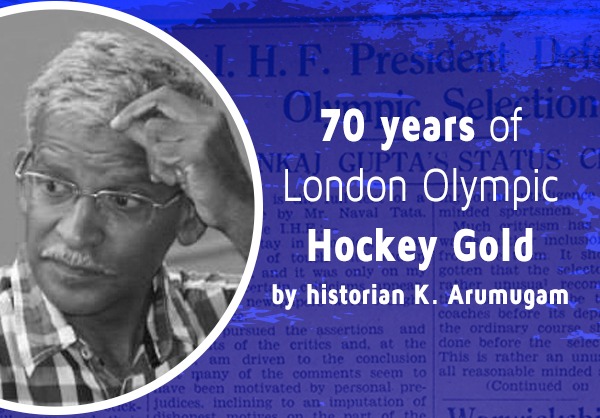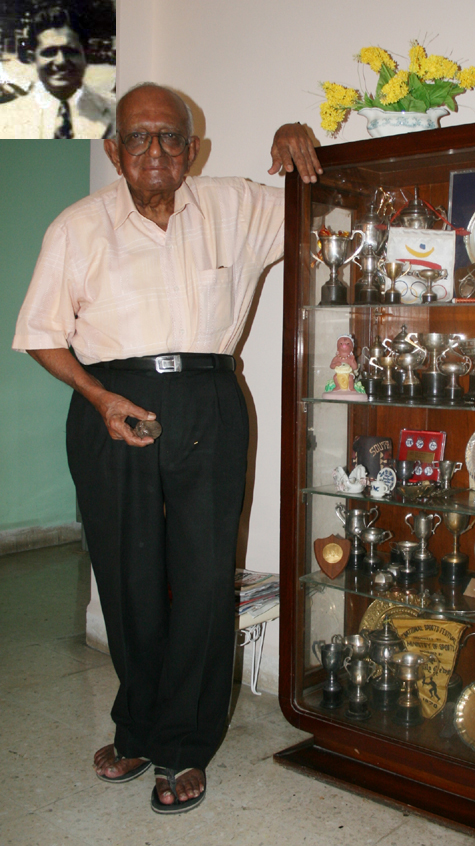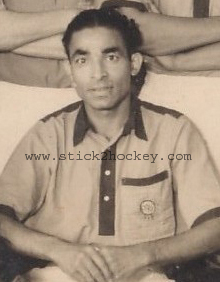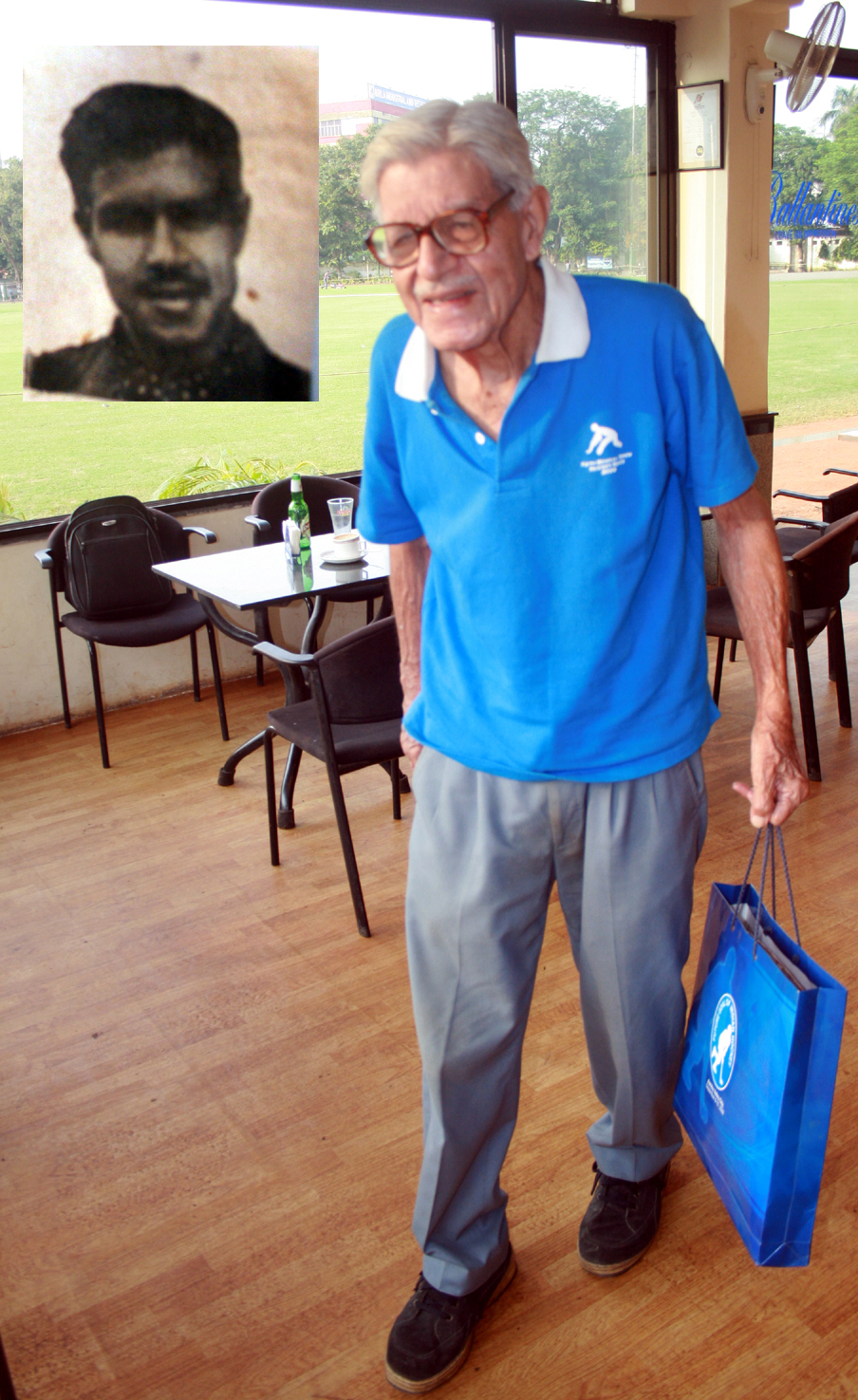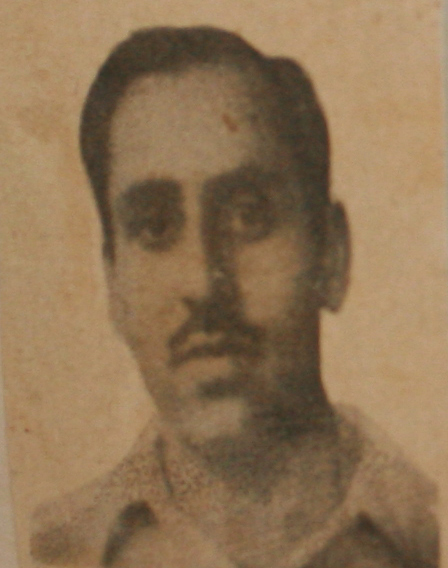Unsung Heroes of 1948 Gold
Share
“Indeed to my mind if a special souvenir was to be awarded to any one player, who contributed most to Indian’s victory, I would unhesitatingly give the palm to our squat, smiling-faced Leo. His display in the semifinal against Holland should forever niche for Pinto a plaque to himself in the hockey hall of fame”.
The above words were not from any writer to take it lightly. A player of the 1948 Indian Olympic hockey team, who got injured mid way through the hockey event, wrote even before landing home country. (Locating of his writings is the best finding in this writer’s career).
He was professionally a journalist, and wrote reams about 1948 Olympics. Since he himself played a match, and part of the team, his words should count.
His appreciation was not without merit. India was almost pushed to corner in the last moments of the semifinal. India 2 Holland 1 with just six minutes left in the clock. Holland has got six penalty corners in that spell,
defenders RS Gentle and Trilochan Singh having very rough to contain the ‘direct hockey’ of the Dutch. It was Leo, born in Africa, brought up in Bombay, who missed the 1936 Olympics due to injury, who stood between Dutch goal and India. While Pakistan caved in in such situation against Britain in the other semis, Leo did not allow such a disaster for India.
Leo incidentally was the senior most in the team. He died when he was 96.
Britain got a penalty bully (equivalent of penalty stroke) mid way in the final, it was left to Leo to tackle in the resultant one-to-one duel against the Britain captain. Lion-hearted Leo discarded his pads for a while, faced it, and saved too. Otherwise, the score would have been 2-1, and had been so, who knows what course the match would have taken, how we would have secured the unblemished 4-0 score which now is the final historic label.
Next comes second senior most in the team Kishen Lal, the unanimous choice of captain.
The speedy forward was one of the six players in the team to play all the Five Matches, which meant the kind of fitness they had had. India was struggling against Spain in the league and against Dutch in the semifinals. It was left to the second senior most in the team Kishen to lift the sagging morale of his team with a move or two on the field that would even surprise him, and energize the team which is in loathe. Every match report published in those times give full credit to him for such specs of spectacular moves that silenced the rivals, leading to Indian fame.
In today’s parlance he is prototype of SV Sunil, tireless cross manufacturer. Of course crosses are forgotten goals that came out of another’a adept is.
Third in the row is Keshav Dutt. He was affected by Partition, stranded in Mumbai. His family wrote to him not to return, as the city is in flames, they themselves were out to leave Lahore. Keshav found a stay in Mumbai, cajoled everyone to take him into Bombay side for the Selection National, and the rest is history. He is in modern day parlance equated to Manpreet Singh. He played all the six matches, where he excelled.
Then you have KD Singh Babu, who is ambitious, self-conscious, emotional cauldron, aristocratic life style, but gem of a player, team man, who will part balls selflessly in the circle in order to see team wins.
There was then Pat Jansen, whom you may compare to Baljit Singh Dhillon.
Then you have the awe-evoking Penalty Corner expert lanky Trilochan Singh Bawa.
He played for Faridkot team, and had the company of legendary Udham Singh (four times Olympian). Impeccable interceptor of ball, game accelerator par excellence when team is down, his role had been vital in every game. He is much like present day Rupinder Pal Singh.
The most important cog in the wheel, that smashed the British Pride once for all, was Amir Kumar, the fulcrum around which the entire team would move– the centre-half.
He can truly be equated to present day Sardar Singh. As a true team man, he played as per the game plan, never worked for himself, never gave interviews in his entire career. It does’t mean the former Dockyard player, later Dunlop player, played less role.
So much so, he was selected for his second Olympics in 1956, despite missing 1952 number. When India was leading 1-0 in the 1956 final, it was Amir who saved a penalty bully, and thus saw to it Indian score doesn’t become 1-1.
When the nation rejoices the 1948 Olympic Gold these heroes, their relatives and promoters too deserve all adulation.
Are we doing it?
ARE WE FAIR TO THOSE DEPARTED AND LIVING SOULS?
Picture caption
Top most: Leo Pinto in his late 80s at home in Bandra (Mumbai)
Second from top: Kishen Lal
Third from top: Keshav Dutt (inset his young age)
Bottom: Amir Kumar

